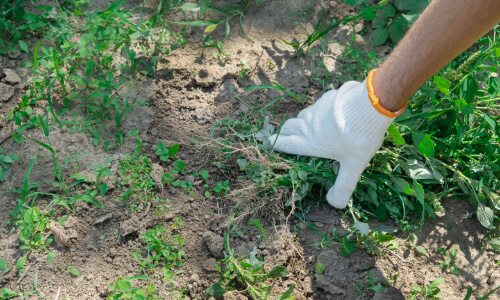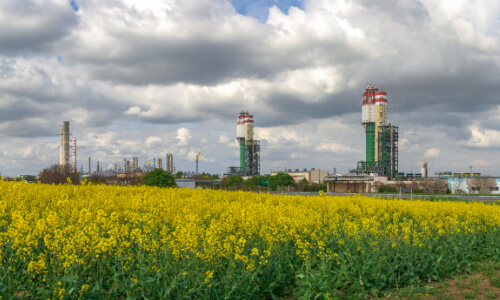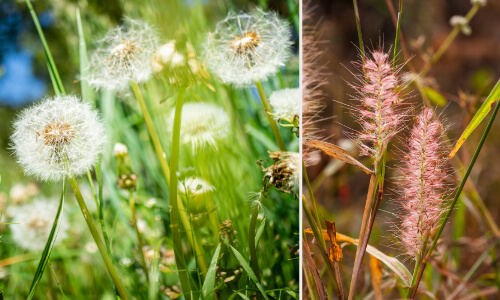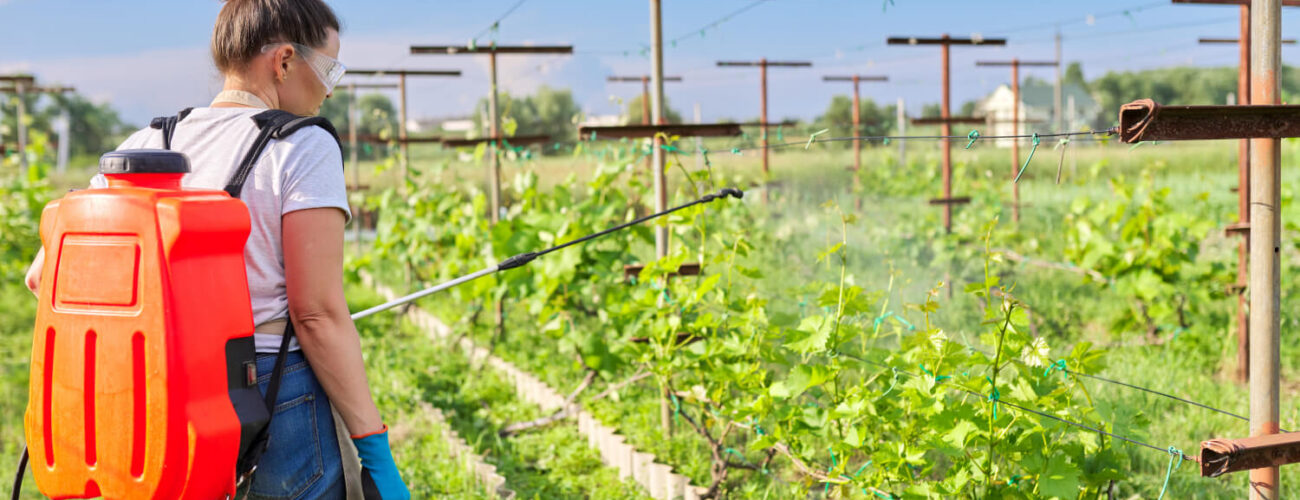Weed control is an essential part of successful farming and landscaping, and the right herbicide can make all the difference. With various herbicides available on the market, knowing which one to choose can be challenging. Among the most commonly used types are Residual vs Non-Residual Herbicides.
Understanding the difference between these two categories is crucial for effective weed management. While both aim to control unwanted plant growth, they work in very different ways. Whether you’re managing weeds in large crop fields or maintaining a healthy lawn, knowing when and how to use Residual vs Non-Residual Herbicides will help ensure you get the best results.
In this blog post, we’ll explore the key differences, advantages, and ideal applications for each type of herbicide, helping you make an informed decision for your weed control needs.
 What is a Residual Herbicide?
What is a Residual Herbicide?
Residual herbicides are specially formulated to stay active in the soil for an extended period after application. This characteristic allows them to continue controlling weeds long after the initial treatment, making them a popular choice for farmers and landscapers who need lasting protection.
How Residual Herbicides Work
When you apply a residual herbicide to the soil, it forms a barrier that prevents weeds from germinating or growing. These herbicides are typically used for pre-emergent weed control, which means they target weeds before they even appear. By lingering in the soil, they disrupt the growth of future weed seedlings, providing long-term control over unwanted plants.
Common Uses of Residual Herbicides
 Residual herbicides are widely used in agriculture, landscaping, and even home gardening when long-lasting weed control is necessary. They’re particularly useful in:
Residual herbicides are widely used in agriculture, landscaping, and even home gardening when long-lasting weed control is necessary. They’re particularly useful in:
- Row crops like maize, soybeans, and wheat, where consistent weed management is critical for productivity.
- Lawns and turf, ensuring that broadleaf weeds are kept at bay without the need for frequent reapplication.
- Industrial sites or non-crop areas where weeds must be controlled for extended periods without regular maintenance.
Advantages of Residual Herbicides
- Long-lasting weed control: Once applied, residual herbicides keep working for weeks or even months.
- Reduced need for reapplication: Because they stay active in the soil, you won’t have to constantly reapply the herbicide.
- Prevention of new weed growth: By targeting weeds before they sprout, you minimize competition for nutrients and water in your crops or garden.
By using Residual Herbicides, you can focus on long-term weed control and spend less time managing regrowth.
What is a Non-Residual Herbicide?
Unlike their longer-lasting counterparts, non-residual herbicides are designed to act quickly and then break down in the environment, leaving no lasting presence in the soil. These herbicides are often referred to as “contact herbicides” because they kill weeds on contact without lingering to affect future plantings.
How Non-Residual Herbicides Work
Non-residual herbicides work by being applied directly to weeds, where they are absorbed through the plant’s leaves and stems. These herbicides disrupt essential plant functions, causing the weed to die shortly after application. Unlike residual herbicides, non-residual types don’t stay active in the soil. Once the plant is killed, the herbicide breaks down and becomes inactive, allowing for quick replanting or use of the treated area.
Common Uses of Non-Residual Herbicides
 Non-residual herbicides are ideal for situations where immediate weed control is needed without long-term soil activity. These herbicides are commonly used in:
Non-residual herbicides are ideal for situations where immediate weed control is needed without long-term soil activity. These herbicides are commonly used in:
- Post-emergent weed control, especially in crops, gardens, or lawns where weeds have already sprouted.
- Spot treatments, targeting specific weeds without affecting surrounding plants or soil.
- Around crops or sensitive areas, where long-term soil activity could negatively affect future planting or nearby vegetation.
Advantages of Non-Residual Herbicides
- Immediate action: Non-residual herbicides kill weeds quickly, making them ideal for situations requiring fast results.
- Minimal impact on future planting: Once the herbicide has done its job, it degrades, allowing for safe planting of crops or other plants without worry about residual chemicals in the soil.
- Precision control: Ideal for spot treatments or areas where you only need to target specific weeds without disrupting the entire soil system.
By using Non-Residual Herbicides, you gain fast-acting weed control without the worry of lingering soil effects, making it a versatile tool in many weed management scenarios.
Key Differences Between Residual and Non-Residual Herbicides
To effectively manage weeds, it’s essential to understand the differences between Residual vs Non-Residual Herbicides. Both types are valuable tools in weed control, but they serve different purposes based on the duration of their effectiveness, how they are applied, and their environmental impact.
1. Duration of Action
- Residual Herbicides: These herbicides remain active in the soil for a prolonged period, sometimes weeks or even months. They continue to kill or suppress weeds long after application, making them ideal for pre-emergent weed control.
- Non-Residual Herbicides: These herbicides work quickly, killing weeds on contact but breaking down shortly afterward. They offer short-term, immediate weed control and are often used for post-emergent situations.
2. Application Timing
- Residual Herbicides: Best applied before weeds emerge (pre-emergent), providing a protective barrier in the soil that prevents weed seeds from germinating.
- Non-Residual Herbicides: Commonly used after weeds have emerged (post-emergent) to kill existing weeds on contact. They are also ideal for spot treatments where specific weed patches need immediate control.
3. Impact on Soil and Environment
- Residual Herbicides: These remain active in the soil for a significant amount of time, which can have lasting effects on weed control but may also affect non-target plants if not carefully applied. There’s a higher risk of herbicide leaching into surrounding soil or affecting future crops.
- Non-Residual Herbicides: These break down quickly in the soil, leaving no residual impact. This makes them safer for the environment in areas where future crops or plantings are planned. They reduce the risk of unintended damage to other plants or soil organisms.
4. Suitability for Different Situations
- Residual Herbicides: Ideal for long-term weed control in areas where continuous prevention of new weed growth is needed, such as in row crops or industrial areas.
- Non-Residual Herbicides: Best suited for quick results when dealing with weeds that are already established. They are especially useful in gardens, lawns, or sensitive areas where you don’t want the herbicide lingering in the soil.
By understanding these key differences, you can better determine whether Residual vs Non-Residual Herbicides will suit your specific weed control needs.
Choosing the Right Herbicide for Your Needs: Residual vs Non-Residual Herbicides
When deciding between Residual vs Non-Residual Herbicides, it’s important to assess your specific weed control needs. Different factors can influence which type of herbicide will be most effective in your situation. Let’s look at the critical considerations to help you make the best choice.

1. Type of Weeds
- Broadleaf vs Grassy Weeds: Broadleaf weeds (such as dandelions and clovers) and grassy weeds (such as crabgrass and foxtail) often require different approaches.
- Residual herbicides are generally effective at controlling both broadleaf and grassy weeds before they emerge.
- Non-residual herbicides are ideal for controlling visible, established weeds regardless of type.
2. Duration of Weed Control
- If you need long-term weed suppression, such as in fields, industrial areas, or any location where reapplication is difficult, residual herbicides will provide lasting control.
- For short-term or immediate needs, such as dealing with a sudden weed outbreak in a garden or lawn, non-residual herbicides are the best option because they work quickly without affecting future planting.
3. Sensitivity of Crops or Surrounding Vegetation
- Residual herbicides can linger in the soil and may affect future crops if used too close to planting. They are best for areas where you don’t plan to replant immediately or where crops are already established.
- Non-residual herbicides are better for areas where you want to replant soon after application or where nearby plants are sensitive, as these herbicides won’t persist in the soil.
4. Environmental Impact and Sustainability
- Residual herbicides can have a longer-lasting environmental impact, potentially affecting soil health and non-target organisms. They may not be suitable for environmentally sensitive areas.
- Non-residual herbicides degrade quickly, making them a more eco-friendly choice, especially in areas close to water sources or where biodiversity is a concern.
By carefully considering these factors, you can choose whether Residual vs Non-Residual Herbicides align with your long-term weed management strategy.
Pros and Cons of Residual and Non-Residual Herbicides
Both Residual vs Non-Residual Herbicides come with their own sets of benefits and limitations. Depending on your weed control needs, each type may serve you better in different circumstances. Below are the main pros and cons of each type.
Residual Herbicides
Pros:
- Long-lasting weed control: Residual herbicides stay active in the soil for weeks or even months, providing continuous weed suppression. This is particularly useful in large crop fields where frequent reapplication would be impractical.
- Prevention of new weed growth: By targeting weeds before they have a chance to sprout, residual herbicides help keep crops, lawns, and landscapes free from new weed infestations.
- Reduced labor and maintenance: Since these herbicides don’t require frequent reapplication, they save time and effort in weed management, making them cost-effective over the long term.
Cons:
- Potential harm to non-target plants: Residual herbicides may remain in the soil longer than desired, potentially affecting future crops or neighboring plants that come into contact with treated soil.
- Risk of leaching or runoff: These herbicides can sometimes move with soil or water, especially in heavy rains, potentially contaminating nearby water sources or affecting other areas.
- Long-term soil presence: The persistence of residual herbicides in the soil can limit planting options in the treated area for a period of time, making them less suitable for areas where frequent crop rotation or replanting is required.
Non-Residual Herbicides
Pros:
- Immediate results: Non-residual herbicides act quickly, killing weeds upon contact. This makes them the go-to choice for situations requiring rapid weed control, such as when weeds are visibly overtaking a lawn or garden.
- Minimal impact on future planting: Because these herbicides break down quickly and leave no lasting residue in the soil, they allow you to replant or introduce new crops soon after treatment.
- Precision targeting: Non-residual herbicides are perfect for spot treatments, enabling you to eliminate specific patches of weeds without affecting surrounding plants or soil health.
Cons:
- Short-term control: Non-residual herbicides offer immediate weed control but don’t prevent new weeds from emerging. This means more frequent reapplications may be necessary to keep weeds at bay.
- Higher labor and maintenance: Due to their quick degradation in the soil, non-residual herbicides often need to be reapplied regularly, which can increase labor and costs over time.
- Limited pre-emergent control: Unlike residual herbicides, non-residual types are ineffective against weed seeds or young sprouts that haven’t yet broken the soil surface.
By weighing the pros and cons of Residual vs Non-Residual Herbicides, you can determine which option best fits your weed management goals and environmental conditions.
Common Examples of Residual and Non-Residual Herbicides
Understanding the specific herbicides within each category can help you make better decisions for your weed control needs. Let’s look at some commonly used Residual vs. Non-Residual Herbicides and their typical applications.
Residual Herbicides
Atrazine
- Use: Commonly used in corn, sorghum, and sugarcane crops.
- Action: Atrazine remains in the soil for several months, controlling a variety of broadleaf and grassy weeds.
- Application: Ideal for pre-emergent weed control in crops, where long-term weed suppression is needed.
Simazine
- Use: Often applied in orchards, vineyards, and certain vegetable crops.
- Action: Simazine works as a soil-applied herbicide, providing lasting control of broadleaf weeds and some grasses.
- Application: Suitable for areas where weeds need to be controlled without affecting established crops.
Metolachlor
- Use: Popular in row crops like corn, soybeans, and cotton.
- Action: Metolachlor provides long-lasting control of annual grasses and small-seeded broadleaf weeds by preventing them from emerging.
- Application: Applied before the weeds sprout, offering pre-emergent protection during the early stages of crop growth.
Non-Residual Herbicides
Glyphosate
- Use: Widely used in agriculture, landscaping, and home gardens.
- Action: Glyphosate is a non-selective herbicide that kills most plants on contact, with no residual activity in the soil.
- Application: Ideal for post-emergent weed control, especially for spot treatments or areas requiring immediate action.
- Use: Commonly used in cereal crops, lawns, and pastureland.
- Action: 2,4-D Amine is a selective herbicide that targets broadleaf weeds without affecting grasses. It works quickly on contact but breaks down in the soil.
- Application: Best for controlling existing weeds in crops or lawns, with no long-term impact on the soil.
Paraquat
- Use: Used in fruit, vegetable, and grain crops, as well as for weed control on non-crop areas.
- Action: Paraquat is a fast-acting, non-selective herbicide that kills green plant tissue on contact.
- Application: It is commonly applied for quick post-emergent weed control, particularly in settings where rapid weed kill is needed.
Each of these herbicides plays a crucial role in either long-term or immediate weed control, making them valuable tools depending on whether you need Residual vs Non-Residual Herbicides for your crops, garden, or landscape.
Conclusion to Residual vs Non-Residual Herbicides
Choosing between Residual vs Non-Residual Herbicides ultimately depends on your specific weed control needs, the environment, and your future planting plans. Both types of herbicides have unique benefits:
- Residual herbicides provide long-lasting weed control by remaining active in the soil, preventing weeds from sprouting. They are ideal for pre-emergent applications and when you want extended weed suppression, especially in row crops or industrial sites.
- Non-residual herbicides work immediately to kill visible weeds but break down quickly, allowing for new plantings or crop rotations shortly after use. They are best for post-emergent applications, spot treatments, and situations where minimal soil impact is desired.
By understanding the differences between these herbicides, you can select the one that aligns with your goals—whether that’s long-term prevention or rapid, targeted weed removal.
No matter your choice, applying herbicides carefully and according to their instructions is essential for maximizing effectiveness while minimizing environmental impact.
Q&A Section: Residual vs Non-Residual Herbicides
Can residual herbicides harm future crops?
A: Yes, residual herbicides can affect future crops if applied too close to planting or if the residual period extends into the next growing cycle. Always check the product label for how long the herbicide remains active in the soil.
How long do residual herbicides last in the soil?
A: Residual herbicides can last anywhere from several weeks to several months, depending on the specific chemical, soil conditions, and weather. Some herbicides may even last a full growing season.
Are non-residual herbicides safe for organic farming?
A: Some non-residual herbicides are approved for organic farming, particularly those made from natural ingredients. However, conventional synthetic non-residual herbicides like glyphosate are not permitted in organic farming systems.
Can I mix residual and non-residual herbicides?
A: Yes, in certain cases, mixing both types can provide immediate and long-term weed control. For instance, you might use a non-residual herbicide to kill existing weeds while applying a residual herbicide to prevent future weed growth. Consult with a professional or agronomist for proper mixing and application rates.

